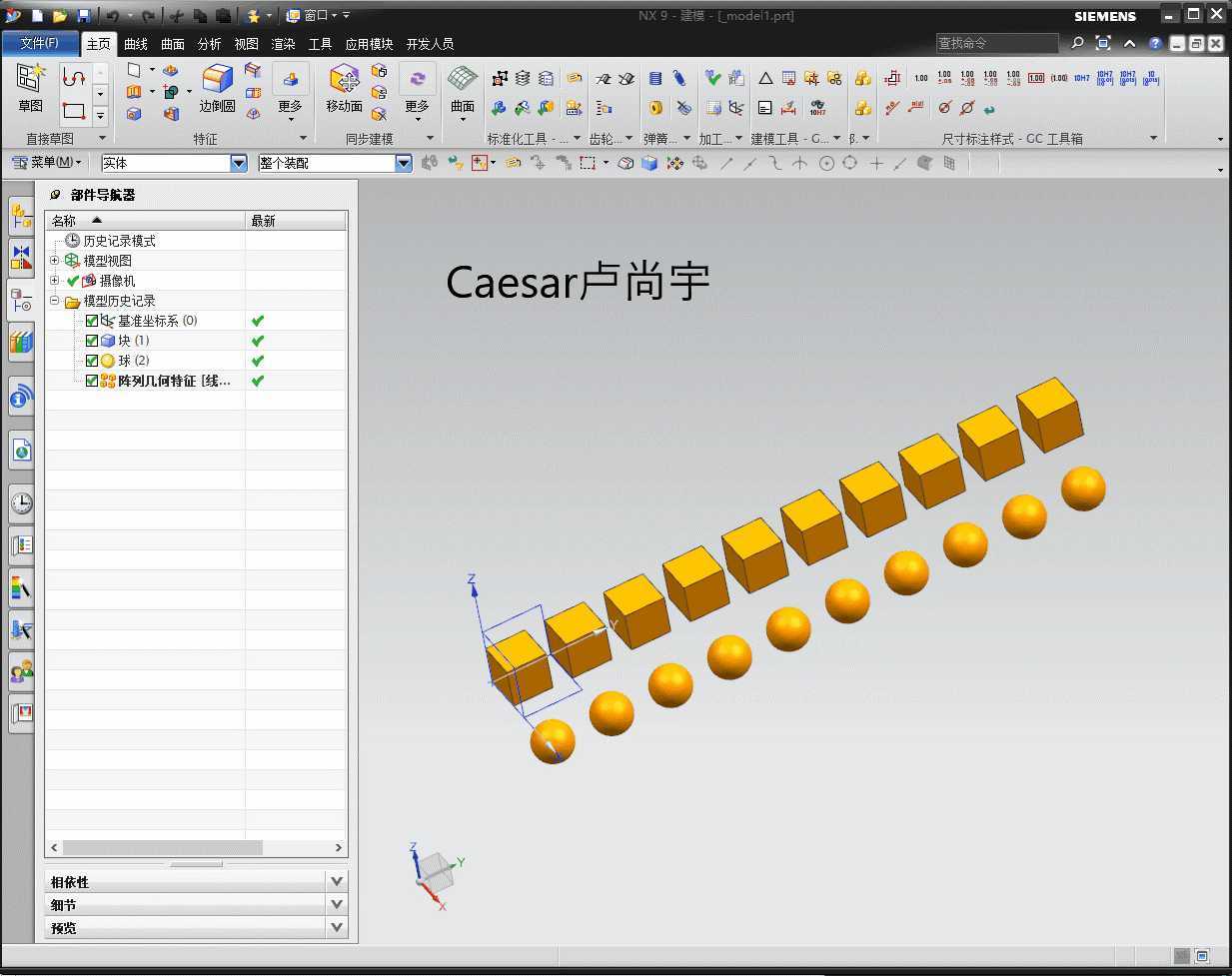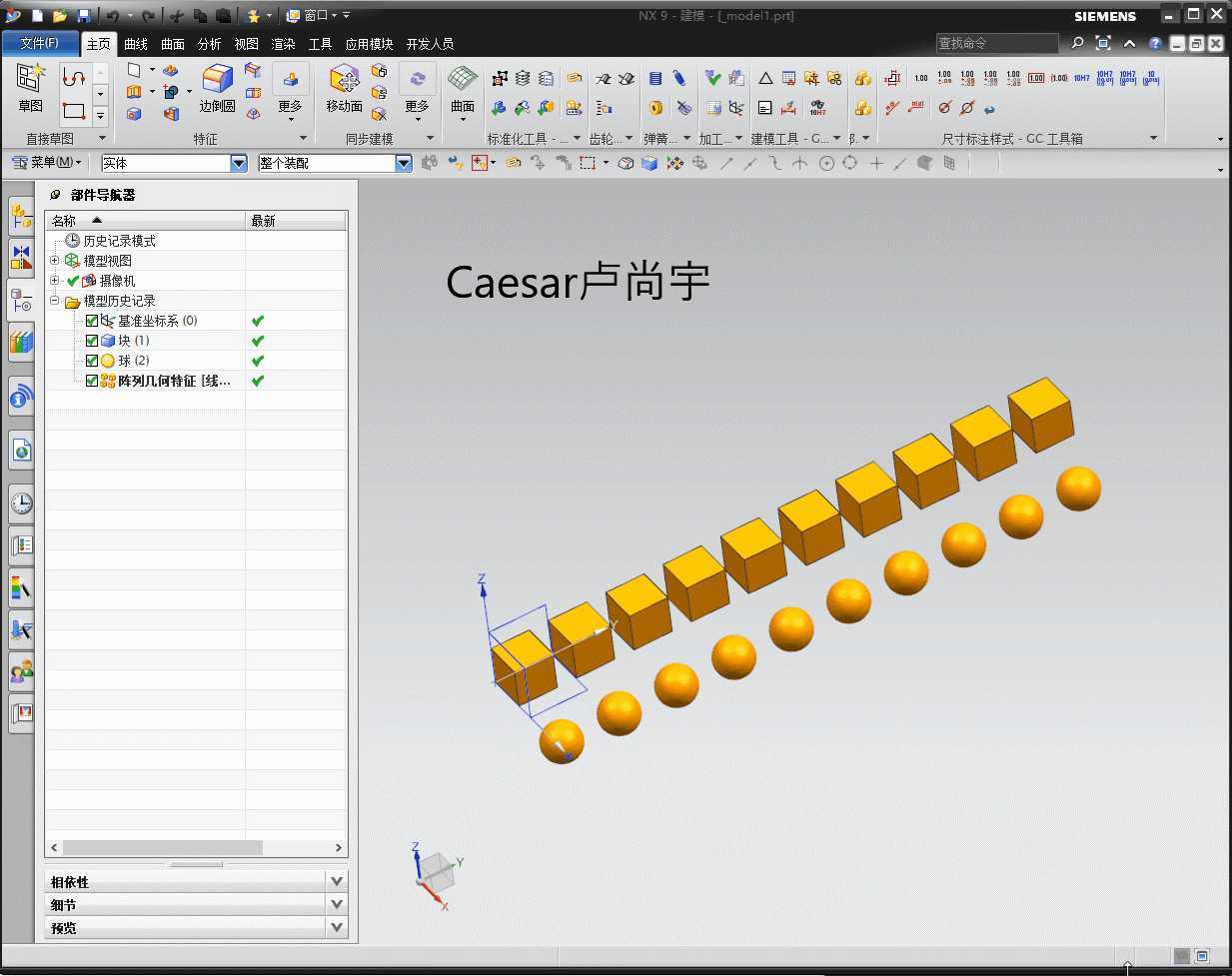NX9+VS2012 using System; using NXOpen; using NXOpen.UF; using NXOpen.Utilities; //TaggedObject转Tag //遍历当前工作部件所有实体 Part WorkPart = theSession.Parts.Work; Body[] Body1 = WorkPart.Bodies.ToArray(); foreach (var item in Body1) { //设置颜色 theUfSession.Obj.SetColor(item.Tag, 186); }

NX9+VS2012 using System; using NXOpen; using NXOpen.UF; using NXOpen.Utilities; //Tag转TaggedObject NXOpen.Part workPart = theSession.Parts.Work; //遍历当前显示部件所有实体 Tag PartTag = Tag.Null; theUfSession.Obj.CycleObjsInPart(theUfSession.Part.AskDisplayPart(), UFConstants.UF_solid_type, ref PartTag); while (PartTag != Tag.Null) { int type1; int subtype1; theUfSession.Obj.AskTypeAndSubtype(PartTag, out type1, out subtype1);//获得类型和子类型 if (type1 == UFConstants.UF_solid_type & subtype1 == UFConstants.UF_solid_body_subtype)//判断实体类型 { //设置颜色 NXOpen.DisplayModification displayModification1; displayModification1 = theSession.DisplayManager.NewDisplayModification(); displayModification1.NewColor = 186; NXOpen.DisplayableObject[] objects1 = new NXOpen.DisplayableObject[1]; NXOpen.Body body1 = (NXOpen.Body)NXObjectManager.Get(PartTag); objects1[0] = body1; displayModification1.Apply(objects1); displayModification1.Dispose(); } theUfSession.Obj.CycleObjsInPart(theUfSession.Part.AskDisplayPart(), UFConstants.UF_solid_type, ref PartTag); } Caesar卢尚宇 2020年6月23日

NX二次开发-NXOpen C#开发中Tag对象与TaggedObject对象转换方法
原文:https://www.cnblogs.com/nxopen2018/p/13184940.html